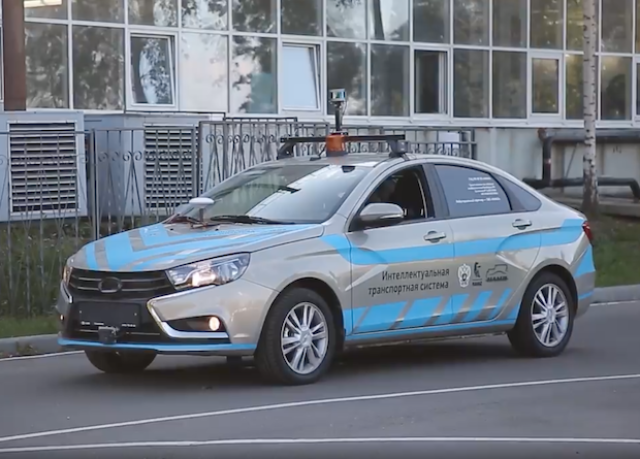NAMI Research Institute showed a prototype of an unmanned LADA Vesta. The drone is already able to independently build a route to the specified point and move along it, assessing the trajectories of other road users. It is tested at the landfill and in urban conditions.
Developers of self-driving cars often create them on the basis of serial cars. For example, Yandex turned Toyota Prius and Hyundai Sonata into drones, and the Security Service — Kia Ceed SW . In order for an ordinary car to be able to drive with some level of autonomy, it needs sensors, processing chips and algorithms for detecting objects and planning movement.
NAMI is developing an unmanned system that can be installed on different cars. The institute decided to test it on one of the most popular Russian cars — Lada Vesta.
The car received a system of sensors from lidars (front, two side and central), radar and video cameras. The traffic planning algorithm allows the unmanned Vesta to drive independently from one point to another, assessing the trajectories of other road users. What level of autonomy it has is not specified.
Now the developers are teaching her group movement in a column with a manned leader. Judging by the video, they are testing it both at the landfill and in urban conditions.
Earlier we wrote about the electric Lada Vesta, which AvtoVAZ presented at the festival of author's song and poetry. The electric car is capable of reaching speeds of up to 140 kilometers per hour, and its power reserve when fully charged is 150 kilometers.
Vasilisa Chernyavtseva

